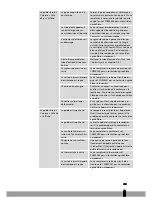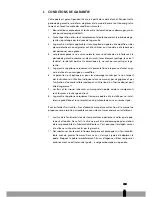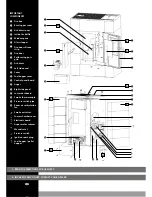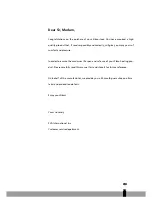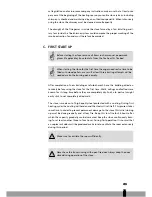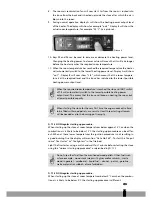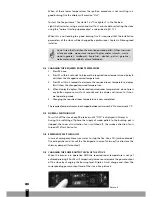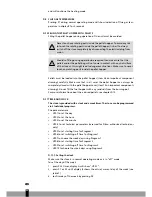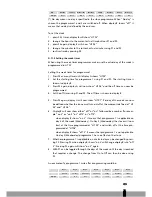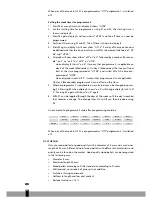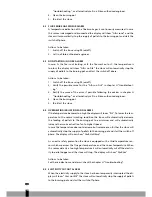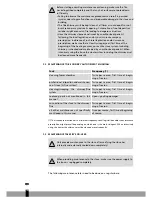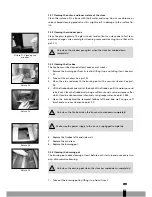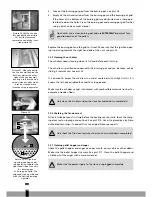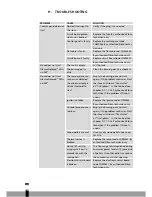
91
4
cal legislation and/or insurance company instructions: make sure that at least once
per year at the beginning of the heating season your entire stove system -including
chimney- is checked and maintained by an authorized specialist. When intensively
using the stove the chimney must be cleaned more frequently.
The draught of the flue gasses is inside the stove forced by a fan. Installing auxil-
iary fans inside the flue/chimney system could comprise the proper working of the
smoke extraction fan and must therefore be avoided.
c. FiRsT sTaRT UP
G
Before starting the stove remove all items such as manual, paperwork,
gloves (if applicable), stove tool etc. from the fire hearth / fire bed.
G
When starting the stove for the first time the auger needs extra time to be
filled with wood pellets, as a result at least three starting attempts will be
needed as also the burning pot is empty.
After completion of new building or refurbishment: have the building dried ex-
tensively before using the stove for the first time. Walls, ceilings and/or floors are
known for its long time before they are completely dry. Soot, ash parts etc might
easily stick to not completely dried walls.
The stove is made out of high quality steel protected with a coating. During first
heating cycles the coating will harden and the steel will set itself. This process takes
some time. In order to prevent permanent damage to the stove this initial stoking
up must be done gradually and at low fire. Keep this low fire for 24 hours after
which the capacity gradually can be increased. Keep the stove continuously burn-
ing for at least another three to four hours. During first operation it is normal that
an unpleasant odour will be produced make sure to ventilate the room extensively
during this period.
Make sure to ventilate the room sufficiently.
Never have the stove running with open fire door. Always keep the door
closed during operation of the stove.





